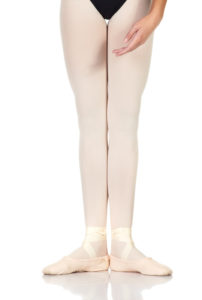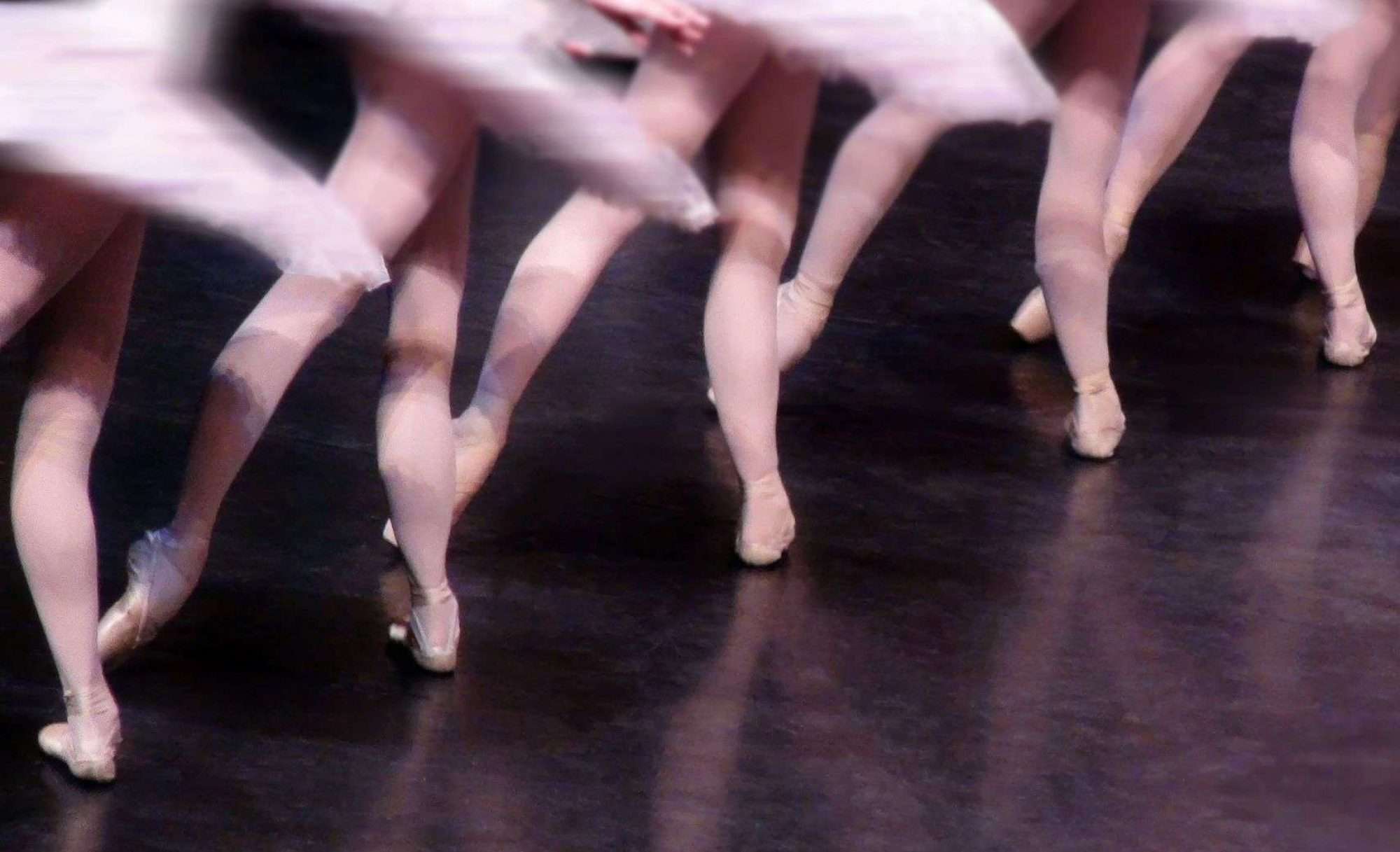 Turnout: a word you will hear from your ballet teacher throughout class and throughout your dancing career. There are differing views on how to go about reaching your maximum turn out, and this can (or should) be a make or break it point when choosing a teacher. I would definitely steer clear of any teachers who demand perfect turnout. It is much safer to practice ballet with a teacher who has you work within your natural ability to turn your legs and feet outward, over time increasing your strength and flexibility to maximize your own degree of rotation in the hip.
Turnout: a word you will hear from your ballet teacher throughout class and throughout your dancing career. There are differing views on how to go about reaching your maximum turn out, and this can (or should) be a make or break it point when choosing a teacher. I would definitely steer clear of any teachers who demand perfect turnout. It is much safer to practice ballet with a teacher who has you work within your natural ability to turn your legs and feet outward, over time increasing your strength and flexibility to maximize your own degree of rotation in the hip.
Beware of forcing the feet into a perfect 180 degree angle in first or second position. If you must bend the knees to put your feet into a turned out position you are in for future knee, ankle, and/or hip injuries. The turnout should always be initiated at the hip. Stand with your feet together and parallel, pulling up out of the knees, and then slowly open the toes outward as far as you comfortably can without making any adjustments in the knees. This is your natural turnout. This is where you should work, and gradually your turnout will improve over time and with more training. Attaining good turnout is another reason most ballet dancers need to start when they are young and before the bones are ossified or hardened.
It’s important to learn how to work within your natural turnout. I try to teach younger students to imagine arrows shooting out of their toes when they are standing in first position, and to move their foot along this trajectory in tendu à la seconde rather than directly side. This will keep their hips in line and they can work on feeling the outward rotation of the inner thigh as they brush the floor with their foot on opening and closing. The same holds true when the leg is lifted en l’air as well. We should try not to sacrifice the “squaring off” of our hips and shoulders (both hips and both shoulders square to the front) in order to get the leg more directly side. It takes some time for dancers to learn exactly where “their” turnout is—where they as individuals should aim in order to keep the proper alignment.
The same is true when working front or back as well: work on your turnout but not at the expense of proper placement in the hips, shoulders, or ankles. A good teacher will know how to guide you into working on your turnout without hurting yourself or overdoing anything. Stretching exercises that utilize the power of gravity are most beneficial and least harmful. If you feel pain, you should lessen your turnout or stop. Ballet is not a natural thing for the human body, and I still think there’s something to be said for countries who screen their young for natural ability before allowing them to study ballet. In America, where many young girls take ballet at some point or another, it’s especially important to find a qualified instructor who will not cause any damage.
Therabands are very useful devices for aiding in stretching and strengthening your whole body. Many physical therapists employ them in rehabilitation after injury or surgery. Click here for information on how to use a theraband.
Any other teachers or dancers out there with comments about acquiring good turnout? Please leave a comment!



I do not have great natural turnout but I have had the most success at improving it when I've focused on releasing the muscles that surround the hip joint. Using balls or rollers for the external rotators, and passive (held) stretches that don't force but let me relax into a turned-out position and stretch the inner thighs.
I have looked at many dance sites and not come across such a site as yours that tells everyone everything they need to know.
I completely concur on your recommendations for teaching children how to work within their turnout. These are the exact teaching practices I use. Particularly have found with younger ones (under 10 years) that standing center and “popping” the toes out helps them identify their stable, natural turnout. With older ones, lying down with their spine on the floor and feet straight up in the air then opening them helps them identify the appropriate, natural, and stable turnout position for their developpes in second position. If students force their turnout, their leg and body alignment suffers terribly and only creates more problems that have to fixed or forced into place, not a healthy plan.
In tendu side, you cannot go toward the toe and use the proper muscles. You must rotate the thighs and work toward going to the side while maintaining the turnout of the supporting leg. To get into first, I suggest you stand parallel with the feet apart and rotate the heels forward imagining the whole leg rotating rather than popping the toes to the side.
Turnout should be understood as a cooperative function of the body – the establishment of aplomb/stance and the continuity of movement in classical ballet must be understood as progressive. Turnout is a complex idea involving the plane of trajectory and the rotational function of the hip joint/leg. Rotation (as Martha’s comment is absolutely correct) should begin in learning to stand up by moving the heels forward with straight legs/knees, and not by moving the toes backwards – when the toes are moved back it disengages the rotators and sets the child’s weight on their heels, this also can cause a displacement in the pelvic and lumbar area, which will limit the child’s ability in developing correct functional strength. The standing position of “first” must be engaged in a fully lengthen rotational extension that involves the supportive “lift” of the abdominals, as well as the engagement of the lower back postural muscles (psoas, etc…) to create a cohesive stable foundation that will allow the working/gesture leg freedom of movement. Tendue towards second should initiate from the standing leg in a direct line trajectory laterally (not towards the great toe like the shape of a V), this idea produces vertical extension and stability in the standing leg, and well allow the student to develop the rotation in the working/gesture leg – this is true turnout because the standing leg serves the function of a “door-frame” while the working/gesture leg becomes the “door” the developing of the “hinge” of the working/gesture leg in á la seconde must be done slowly and progressively, with suitable amount of pressure exerted through the floor by the working/gesture foot/leg. Slow simple repetition of this until strength is increased is a necessity before any “steps” are taught – otherwise the student will not the ability to functional place the body into correct alignment when transferring weight from one foot to the other.
Typo corrections to last sentence in above post, should read: “otherwise the student will not *develop* the ability to *functionally* place the body into correct alignment when transferring weight from one foot to the other.”
Thank you for the comments on turnout! Jonathon, I’ve never heard the door and hinge analogy so that is very helpful. I would love to have you write a post on this or any other topic that you feel would be beneficial for teachers and dancers. You may email me directly at tammy.rhoades@insideballet.com. And I thank you as well for the wonderful comment you left about the LinkedIn group, Teachers of Classical Ballet. I’m happy that people are finding it useful!